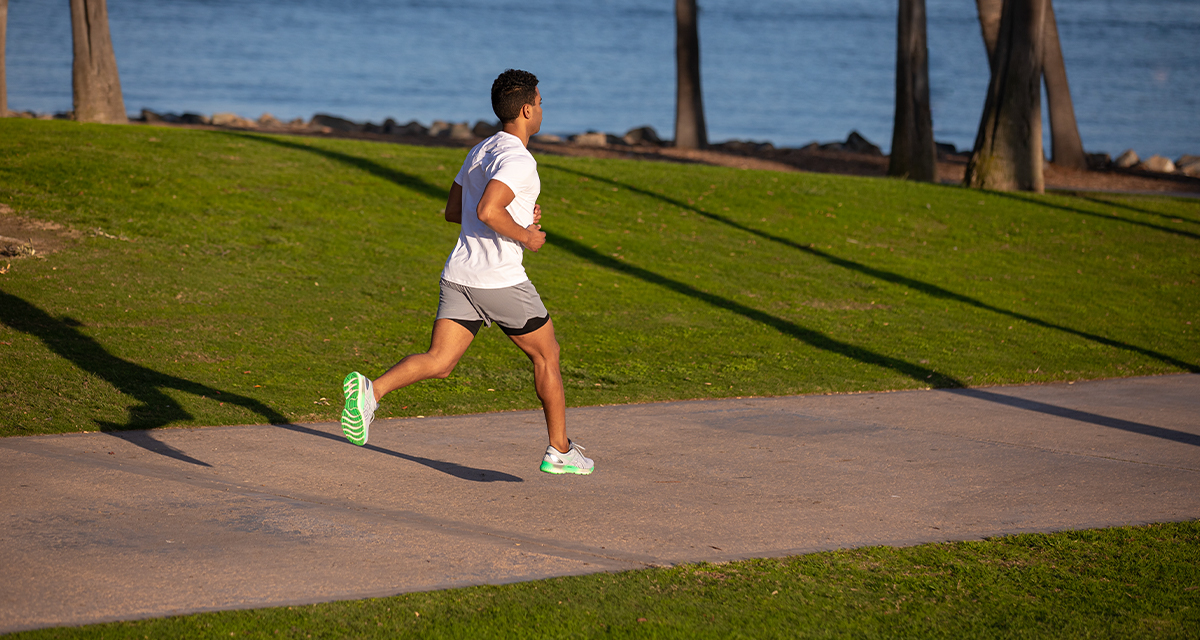We all want to be healthy and live happier, more fulfilled lives. Our habits define whether or not we achieve these goals. Habits, rather than conscious decision-making, can shape as many as 45% of the choices we make every day. Achieving excellence isn’t about a single act of greatness—rather, it’s the end result of things you choose to do repeatedly. In other words: your habits.
When it comes to running, initial motivation can lead us to get out for a couple of runs and buy some new gear. For many though, purchasing a new pair of running shoes doesn’t lead to a positive habit or change of routine, and after a while, those good intentions can easily fall to the wayside.
So, how can we make running a habit? Let’s take a look.
Create habit loops
Researchers at a leading university discovered a simple neurological loop at the core of every habit. This loop consists of cues, routines, and rewards.
 “First, there is a cue, a trigger that tells your brain to go into automatic mode and which habit to use. Then there is the routine, which can be physical or mental or emotional. Finally, there is a reward, which helps your brain figure out if this particular loop is worth remembering for the future.”
“First, there is a cue, a trigger that tells your brain to go into automatic mode and which habit to use. Then there is the routine, which can be physical or mental or emotional. Finally, there is a reward, which helps your brain figure out if this particular loop is worth remembering for the future.”
For example:
Here’s a cue, routine, reward breakdown for running in the morning…
- Leave your running shoes and clothes out the night before (Cue): As soon as you wake up you will see your running shoes and your mind will focus on going for a run.
- Going for a run (Routine): This is the behavior. When you see your running attire, you go out for a run.
- Feeling good (Reward): The reward is the benefit gained from doing the behavior. After a run, you feel pleased with yourself and will feel good throughout the day.
If the reward from your routine is positive, you’ll want to repeat it the next time. With this example, you may not go for a run every day, but you’ll know that each time you see your running shoes set out in the morning and go out for a run, the experience will be rewarding.
One of the big myths around habit formation is that if you do something for 21 days it will become a habit. Research shows this to be untrue. How long it takes to form a habit depends on the individual, the habit being formed, and a number of environmental factors.
Setting the right cue
Selecting a good cue is the first step to making changes. Your cue shouldn’t be something that you have to remember or need a reminder to do.
A good way to come up with a cue is to think of activities you do on a daily basis and use those as the trigger for your new behaviors. For example: “After I shower in the evening, I put out my running gear”.
Set the bar low
Getting in the habit of running is one thing, but making sure you set realistic goals is also key to making your habit stick. Maybe you want to run a half marathon, lose some weight, or you’d like to run farther. Whatever you want to achieve, you need to have a balance between dreaming big and what is realistic. A study on motivation found that “dreaming big” and aiming for high goals can be an effective way to stay motivated. However, many of us can also find it daunting to chase a lofty goal, fail to achieve it, and become disinterested.
That’s why we should set micro-goals to help us achieve our overall goals. Let’s say you want to lose some weight:
- Your overall goal might be to lose 10 pounds and you could achieve this by running 12 miles per week for a month.
- Your micro goal could be to get up 30 minutes earlier in the morning and go for a short run (gradually building up to your desired 12 miles per week).
Instead of looking at your long-term goal and being discouraged, you will look at small improvements you’ve made and feel better for your efforts.
The next steps
It may take some time to experiment and find the right cues for you to make running a habit. It may also take some time for you to find the right micro-goals as you achieve your overall goal. Some runners cite having a group of friends to run with on a periodic schedule, buying a new running outfit after a micro goal has been achieved, or using a tracking app as important ways they’ve stayed focused on their goal. It’s all a process of self-discovery, and even when experimenting, you’ll learn new things about what motivates you, how your body works, and how to improve your wellbeing.
Read more: 6 tips to make time for running




